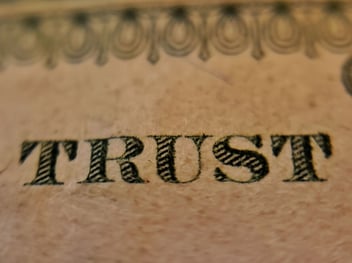Public relations is hard work; B2B public relations is even harder. The audience you’re asked to communicate with has an extra layer of responsibility that everyday consumers don’t have. B2B audiences are an intricate quilt of CIOs, CTOs and more looking to make informed decisions on behalf of the companies they work for. There’s a layer of skepticism you have to break through to reach them.
Want your B2B brand to stand out from the crowd? Harness the power of data.
Data is more powerful if it’s your own
The reality is that any PR professional can cite third party data in a pitch. And, believe me, they do. What will set your pitch apart from the dozens each journalist receives in a day is proprietary data. With proprietary data you can offer unique, valuable insights that no one else in a reporter’s inbox can. But before you can offer this data, you have to generate it. By making surveys a staple in your media outreach strategy, you can.
Idea Grove client daVinci Payments has taken this approach. The marketing leadership there understands that if it can provide valuable insights that service others and aren’t intended to self-promote, it will become the trusted thought leaders in their space. With this approach, the results have spoken for themselves. In 2019 daVinci saw a 66 percent increase in original articles placed with target publications when proprietary data was used in the PR campaign versus PR campaigns without this element included.
While the idea of creating surveys and generating data can be intimidating, it doesn’t have to be. Technology has taken a lot of the harder leg work out of running surveys. Platforms like Qualtrics, Toluna, SurveyMonkey, and Typeform are easy to use and, depending on the type of audience you are wanting to sample, can be inexpensive.
Generate data that tells your story
Now that you’re thinking about generating your own data, it’s important to take the time to consider what data you want to generate. Ask yourself what will be valuable to the respective stakeholders you’re trying to communicate with and how the product or services you offer can benefit them. Once you know these two things, you can narrow down the focus of your survey to generate data that is insightful to your target audience and that your offerings directly support.
For example, daVinci’s instant payment solutions work exceptionally well when incorporated into brand loyalty programs. Because this is the case, daVinci surveyed consumers asking which brand loyalty program was their favorite and why, but more importantly, asked for their reward expectations and preferences. From this survey came a comprehensive list of 2020’s top loyalty programs (a key insight to catch the eye of journalists) and the fact that, besides receiving free product, the majority of consumers prefer being rewarded with prepaid cards that can be spent anywhere. This allows daVinci’s Payment Accelerator to enter the chat.
Data ages well, make your findings work hard for you
Don’t get me wrong. Crafting and executing surveys is hard work! The good news is the shelf life of the data your collecting is often lengthy. This is your opportunity to look at the next 6-12 months to identify the major themes of your PR program and determine which of your banked data will support future initiatives.
Another example from daVinci: Approaching Q4 last year, daVinci anticipated journalists’ need for data around holiday purchasing trends and resurfaced the previous year’s data to provide educated forecasts around the season ahead. This effort secured the brand coverage in top retail and business publications Retail Dive, Forbes and eMarketer.
The takeaway is simple. People, especially journalists, trust quantitative data, and even more than that, they trust those who’ve taken the time to generate that quantitative data themselves. There are limitless opportunities to enhance your B2B tech PR program with this strategy, so next time you’re kicking off a campaign consider starting with a survey.

 3 min read
3 min read





 14 min read
14 min read

